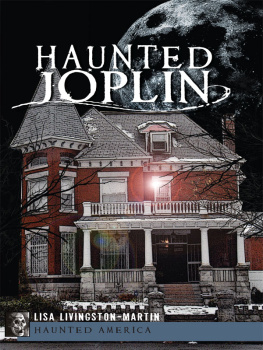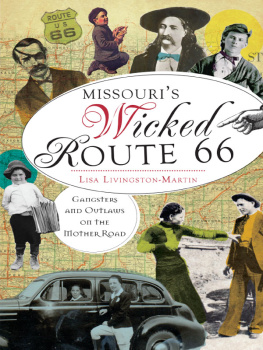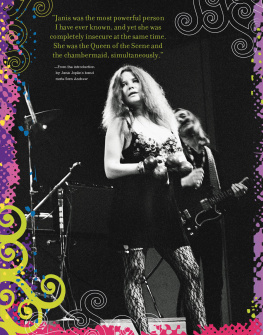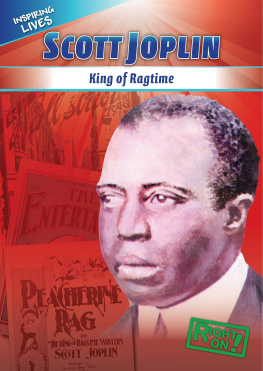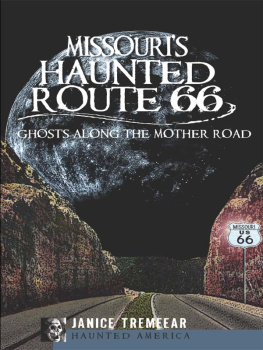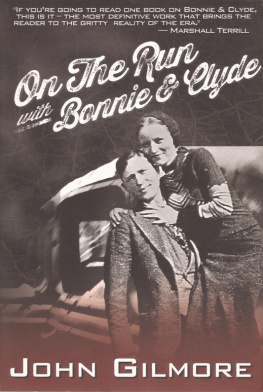

Published by Haunted America
A Division of The History Press
Charleston, SC 29403
www.historypress.net
Copyright 2012 by Lisa Livingston-Martin
All rights reserved
Cover image: Photograph of the Simon Schwartz Home. Built in 1890, this home is one of many opulent buildings found in Joplin. The home was later owned by Dr. Samuel Grantham, who reportedly treated a member of Bonnie and Clydes gang for a gunshot wound during one of their many trips through Joplin. Photo by author.
First published 2012
e-book edition 2012
Manufactured in the United States
ISBN 978.1.61423.684.9
Library of Congress CIP data applied for.
print ISBN 978.1.60949.632.6
Notice: The information in this book is true and complete to the best of our knowledge. It is offered without guarantee on the part of the author or The History Press. The author and The History Press disclaim all liability in connection with the use of this book.
All rights reserved. No part of this book may be reproduced or transmitted in any form whatsoever without prior written permission from the publisher except in the case of brief quotations embodied in critical articles and reviews.
For my children, Alex, Benton and Cameron.
May you see all your hopes and dreams come true.
CONTENTS
ACKNOWLEDGEMENTS
I have been blessed by the support of many people during this project. I would like to thank my three amazing sons, who are my inspiration and motivation, and my mother and my sisters, who have put up with the demands on my time.
My experiences with Paranormal Science Lab (PSL) have inspired this book. Follow PSLs research at www.paranormalsciencelab.com. A thank-you to all of the Paranormal Science Lab team members, whose efforts made much of this project possible: Brian Schwartz, Jordyn Cole, Mistie Cole, Eric Crinnian, Matt Crinnian, Kelly Still Harris, Bill Martin and Carla Martin.
I would also like to thank those who have been supportive of Paranormal Science Lab and its efforts to bring attention to and to promote preservation efforts for historic sites such as the Kendrick House in Carthage, Missouri.
A special thanks to Victorian Carthage, the nonprofit owner of the Kendrick House, and to its board of directors, Kelly Still Harris, Bonnie Harris and Roberta Williams, who are more than caretakers of this wonderful, historic home. Thanks also to the Joplin, Missouri Public Library, the Post Memorial Art Museum of Joplin and the Webb City Public Library. And to Danya Walker, Mike Harris, John Hacker, Joe Hadsall, Kevin McClintock, Leslie Simpson, Josh Shackles, the Carthage Press, Joplin Globe, Joplin Metro Magazine, Show Me the Ozarks Magazine, the Fuse, KOAM TV, KODE TV and the Missouri Humanities Council for spreading the word. Thanks to all of those who have attended PSL activities, including the Haunted History Tours at the Kendrick House. We have made new friends and enjoyed sharing both history and the paranormal with the public.
I am indebted to the knowledge of many people in researching and writing this book. I want to thank Steve Cottrell, author and expert on history in southwest Missouri. I would like to thank former and current property owners and residents of locations featured in Haunted Joplin for speaking with me. Thanks to those who were kind enough to contribute use of their photographs: Paranormal Science Lab members; Victorian Carthage, for use of items in the Kendrick House collection; the Joplin Library; and the Post Memorial Art Museum.
I wish to extend a special thank-you to Janice Tremeear, of Springfield, Missouri, author of Missouris Haunted Route 66: Ghosts Along the Mother Road, Haunted Ozarks and Wicked St. Louis, for encouragement and for introducing me to my editor, Ben Gibson. A special thank-you to Ben Gibson and everyone at The History Press, for making this book possible.
CHAPTER ONE
THE OZARK PLATEAU
LIVING IN A LAND OF PARANORMAL FOLKLORE AND LEGEND
When people discuss Joplins origins, they usually start with the years following the Civil War, when events led many to use the name Joplin when referring to the growing mining settlement. As with many stories, the beginning isnt quite that simple. The area that is present-day Joplin was once settled by various Indian tribes, most notably the Osage, until the Osage War of 1836 pushed the tribe west into the Kansas and Oklahoma territories. The name Ozarks is derived from the Osage Indians.
White settlers came into the area beginning in the 1830s. Various settlements and towns were formed in the area of the future city of Joplin. John Cox, who, along with Patrick Murphy, would come to found the city of Joplin, first founded the city of Blytheville in 1836, in what is now north central Joplin. Like most settlers coming into southwest Missouri during the 1830s, Cox was a southerner. He built a log cabin for his family, and a small settlement grew up around his property. After the establishment of a post office in 1841, the settlement was named Blytheville. Soon, other settlers were establishing large tracts of property, and other settlements formed, one of which was Sherwood, which stood on the northwest edge of present-day Joplin. At the outbreak of the Civil War, Sherwood was the third largest town in Jasper County, with more than 250 residents.
Over time, Native American legends from the region and the beliefs of southern settlers converged to give the Ozark Plateau region a rich, unique folklore, including documentation of paranormal experiences. As a result, events of long ago continue to reverberate in the form of paranormal activity in certain places, and today, the observer is left with the task of deciphering the activitys origins and meaning.

The Sigar family, early settlers of Joplin. Notice that Joplin is written on the oxen yoke. Courtesy of the Joplin Public Library.
There are some recurrent ghost stories told throughout the Ozark Plateau area that date to the 1800s. There are numerous stories of old, haunted log cabins that involve noises heard by passersbysounds of someone chopping wood, of an axe being sharpened on a grindstone and even that of water being poured on the grindstone in intervals, as would have been done in life. These stories were recounted in various places and usually involved abandoned cabins and farmhouses. Other types of noises discussed in these early ghost tales include that of a man walking across the floor in his boots and retrieving water from a bucket. This story has been associated with abandoned homes as well as occupied dwellings. For instance, in the 1900s, an elderly woman claimed to have heard the sound of a mans boots crossing her floor and of water being dipped from a bucket in her small log cabin.
In other instances, the cabin itself was the ghost. People have claimed to have seen phantom cabins in the distance in spots where no building ever existed, as far as local residents could recall. These visions would appear and vanish as one approached them, almost like a mirage. Another common story would involve travelers observing smoke coming from the chimney of an unoccupied cabin, and upon inspection, they would find that the floor was covered in thick, undisturbed dust and that no fire had been built in the fireplace in years. Likewise, the phantom cabins described were often said to have smoke rising from the chimneys.
Next page
